|
|
 |
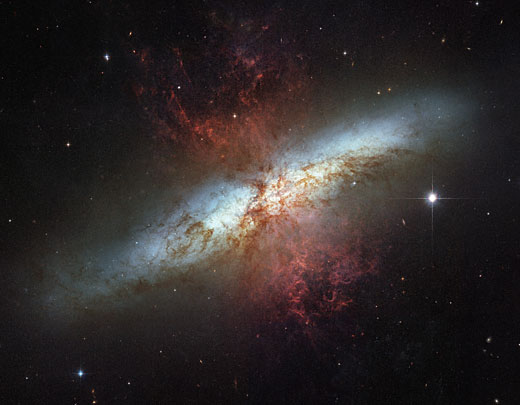 |
|
|
| Image of the magnificent starburst galaxy, Messier 82 (M82). This mosaic image is the sharpest wide-angle view ever obtained of M82. The galaxy is remarkable for its bright blue disk, webs of shredded clouds, and fiery-looking plumes of glowing hydrogen blasting out of its central regions. The Hubble observation was made in March 2006. Astronomers assembled this 6-image composite mosaic by combining exposures taken with four colored filters that capture starlight from visible and infrared wavelengths as well as the light from the glowing hydrogen filaments.
|
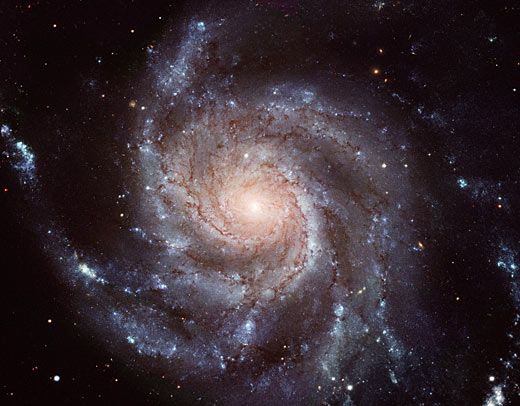 |
|
|
| Spiral Galaxy M101, almost 170,000 light-years across, is twice the size of the Milky Way. This image shows stunning features of stars and dust seen along the galaxy's face-on disk. Background galaxies can also be seen; in some cases, right through the image of giant Galaxy 101 itself.
|
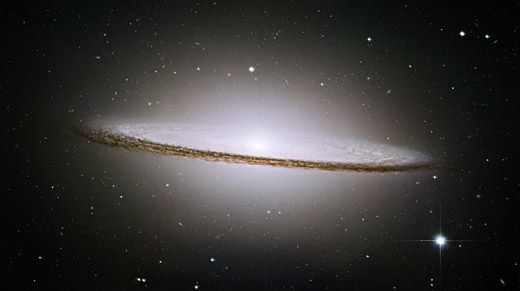 |
|
|
| The Sombrero Galaxy reveals a swarm of glowing stars in a pancake-shaped disk, nearly one-fifth the diameter of the full moon. The galaxy, an edge-on spiral galaxy 28 million light years toward the constellation Virgo, is one of the better known objects in the evening sky. Light from this spiral galaxy emanates from billions of faint stars that form a vast bulge around its relatively tiny nucleus.
|
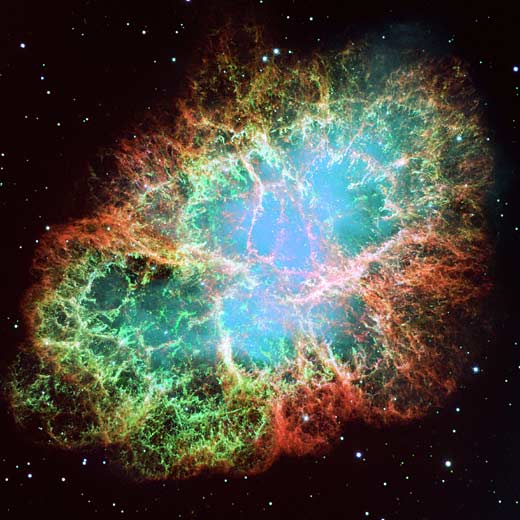 |
|
|
| A rapidly spinning neutron star is the remnant of the star that formed the Crab Nebula and is the dynamo that causes its bluish interior glow. The orange filaments are the tattered remains of the star and consist mostly of hydrogen. This mosaic image of twenty-four individual Wide Field and Planetary Camera 2 exposures is one of the largest ever taken by NASA's Hubble Space Telescope.
|
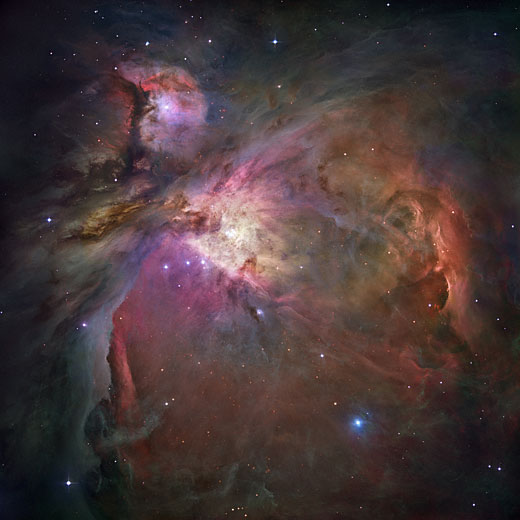 |
|
|
| More than 3,000 stars of various sizes appear in this image many of which have never before been seen in visible light. The Orion Nebula is 1,500 light-years away, the nearest star-forming region to Earth. Four bright stars called the Trapezium can be found in the central region of the nebula. Ultraviolet light unleashed by these stars is carving a cavity in the nebula and disrupting the growth of hundreds of smaller stars.
|
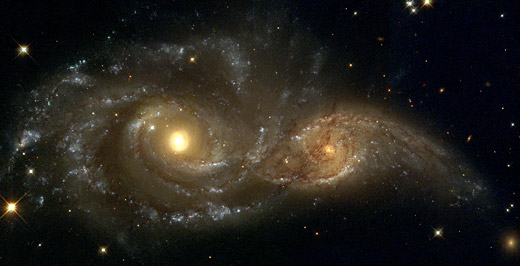 |
|
|
| Two spiral galaxies pass by each other in the direction of the constellation Canis Major The larger and more massive galaxy is cataloged as NGC 2207, and the smaller one on the right is IC 2163. The shape of IC 2163 has been distorted by strong tidal forces and flings out stars and gas into long streamers, stretching out a hundred thousand light-years toward the right-hand edge of the image.
|
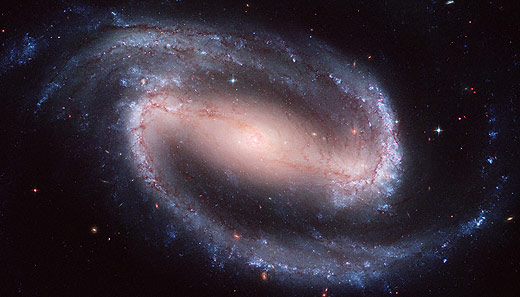 |
|
|
| A composite image of a bar-shaped galaxy NGC 1300, located some 69 million light years away, looking toward the constellation Eridanus, captures a display of glowing gas, starlight, and silhouetted dark clouds of interstellar dust.
|
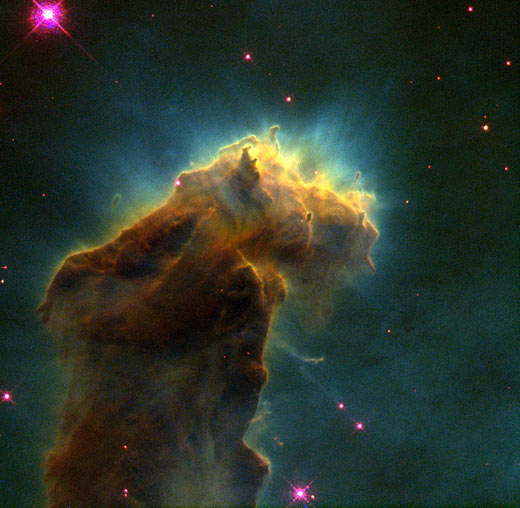 |
|
|
| This eerie structure is a column of cool molecular hydrogen gas and dust that is an incubator for new stars. The stars are embedded inside finger-like protrusions extending from the top of the nebula. Forming inside at least some of the EGGs are embryonic stars stars that abruptly stop growing when the EGGs are uncovered and they are separated from the larger reservoir of gas from which they were drawing mass.
|
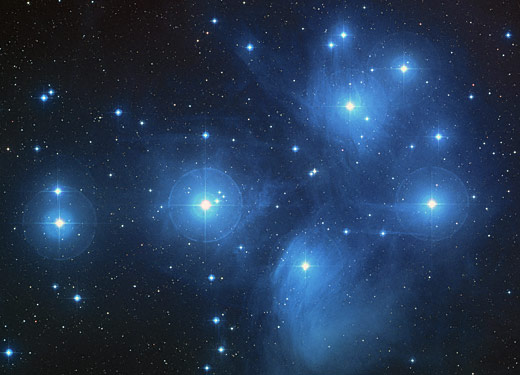 |
|
|
| Hubble Space Telescope's fine guidance sensors have refined the distance to the popular open star cluster Pleiades, or Seven Sisters to about 440 light years. Some 1,000 stars comprise the Pleiades cluster, located in the constellation Taurus. Slight changes in the apparent positions of three stars within the cluster when viewed from different sides of Earth's orbit were also recently discovered.
|
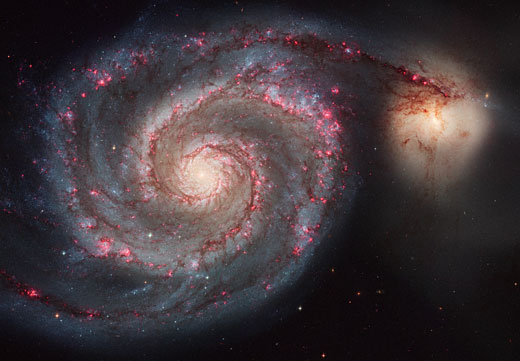 |
|
|
| Two interacting galaxies, 300 million light years away toward the constellation Coma Berenices resemble the long tails of mice at play. The Mice Galaxies, known as NGC 4676, are so named because the long streams of stars, gas, and dust thrown off of each of the galaxies is a result of their interaction. The Mice Galaxies will eventually merge to form one galaxy.
|
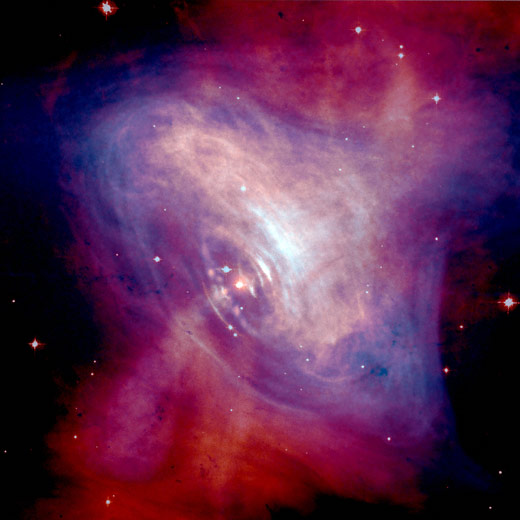 |
|
|
| A composite image showing the X-ray (blue), and optical (red) images of the Crab Nebula superimposed, reveals an inside the "shell" view. The size of the X-ray image is smaller because the higher energy X-ray emitting electrons radiate away their energy more quickly than the lower energy optically emitting electrons.
|
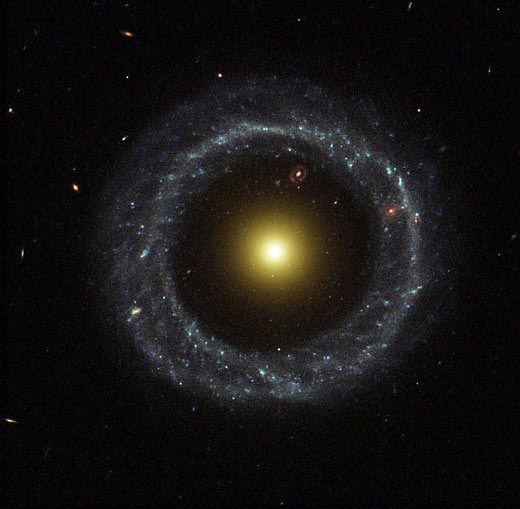 |
|
|
| Hoag's Object is a nearly perfect ring of hot, blue stars pinwheels formed about the yellow nucleus of an unusual galaxy. The entire galaxy is about 120,000 light-years wide, which is slightly larger than our Milky Way. The blue ring, is dominated by clusters of young, massive stars, in sharp contrast to the yellow nucleus of mostly older stars.
|
|
|
|